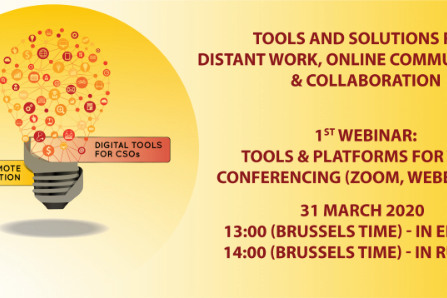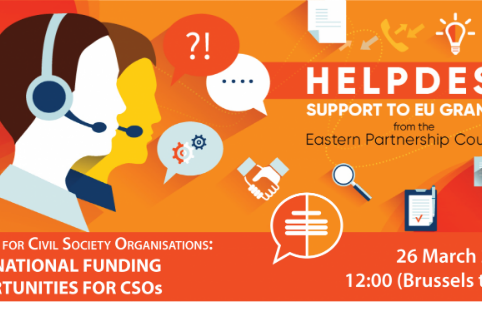 Virtual Reality offers the potential for an extremely engaging and immersive experience that could present real opportunities for learning and development.
Virtual Reality offers the potential for an extremely engaging and immersive experience that could present real opportunities for learning and development.
However, there is a real danger that corporate L&D is going to miss the most massive and impactful transformations of this learning technology.
Virtual Difficulties
Virtual Reality is not a new phenomenon, at Learning Light we bought our first headset in 2006, and since then we have seen VR mature to become a proven technology.
This was not always the case, and when we first looked at VR it was a technology still mired by issues such as around latency, and the less than perfect performance of the headsets tended to make learners feel nauseous.
Looking at these issues, coupled with the expense of procuring and developing learning on a new technology, it is not difficult to see why L&D steered clear of VR.
Recently Investors such as Facebook, Microsoft, Samsung and Sony have all launched hardware products that now make the promise of an effective and accessible virtual reality.
At Learning Light we have been trying Virtual Reality learning products developed by eLearning Studios and the effect is stunning. The queue to try this product out at Learning Technologies in 2016 was also amazing.
It is difficult not to be impressed by Virtual Reality, and it is quite amazing in its engagement and reality.
Virtual Improvements
It is fair to say that L&D does not do a great deal of Research & Development. Many L&D professionals, while interested in the latest learning technologies, have been cautious about adopting serious games, immersive learning, and augmented and virtual reality for some time, believing that it will be a hard sell to the decision makers in their organisation. This was true at one time, but in our opinion it is now an out of date view. Here is why:
- The hardware now works and works well, and a competitive market amongst the vendors will drive down prices and increase innovation.
- Elearning developers such as elearning Studios are now skilled in building out Virtual Reality learning materials and they are without doubt very impressive indeed. The development environments such as Unity are well proven by the video games industry.
- Virtual Reality based learning can now be tracked courtesy of Tin Can, or xAPI, and actual learning and performance metrics are captured during the virtual reality course. The VR course on public speaking built by eLearning Studios is a superb example of measuring and evaluating a learner’s performance metrics in this VR environment. This really will take on the individual’s performance improvement and become of great value to skills coaches in a way not yet fully appreciated.
The ability to track to the LRS and LMS provided by the xAPI protocol effectively overcomes one the key reservations as learning statements can now be generated within the VR experience. eLearning Studios working with xAPI experts Rustici (now part of the LTGs group) have done the work.
Studies into the effectiveness, or “Learning Affordance” of Virtual Reality have been conducted since 1998. The Educational Value of an Information-Rich Virtual Environment (Bowman et al 1998), from the 3D interaction Group at Virginia Tech, stated the following:
“Learning in the environment where it will be applied greatly increases retention rates and engagement.”
In 2004, Clark Aldrich published Six Criteria of an Educational Simulation.
“Whilst we acknowledge that a simulation is only a representation of real-life, there are features that can enhance real-life experience.
For example, a simulation can provide authentic and relevant scenarios, make use of pressure situation that tap users’ emotions and force them to act, they provide a sense of unrestricted options and they can be replayed.” – Aldrich (2004).
From other Business Sectors to Learning
The use of VR for business will go mainstream, with many applications across a wide range of industry sectors, as well as becoming the mainstay of video gaming. Its usage will be for all manner of interactions from entertainment, product design, sales and marketing (from retail to buying a home), as well as leisure pursuits and experiences, to skills and training. In fact Goldman Sachs has created 9 use cases to support their contention that the VR and AR markets are set for significant growth. Naturally, the field of learning is one of those use cases.
 Goldman Sachs predicted in January 2016 that Virtual Reality, along with Augmented Reality, will overhaul TV by 2025, and the market will look like this:
Goldman Sachs predicted in January 2016 that Virtual Reality, along with Augmented Reality, will overhaul TV by 2025, and the market will look like this:
The VR market will generate between $80 to $110 billion dollars compared to TVs $99 billion in 10 years’ time. The education VR market is forecast by Goldman Sachs as worth $0.7 billion.
The hardware / software split is about 56% to 44% according to this forecast and a whole new developer community is about to emerge with Facebook having signed up 200,000 developers to create games for Oculus Rift.
Goldman Sachs see the market as 75% VR to 25% AR and a steady 5- 10% annual fall in prices over the decade, principally in hardware costs.
A recent study noted by the Serious Games Institute predicts that the VR market will be worth (globally) $33.9bn by 2022 with a CAGR of 57.84% between 2016 and 2022.
What will this mean for learning and development?
Learning Light has long looked at the video games market and anticipated the breakout of serious games or immersive learning into mainstream L & D and there is now considerable interest and momentum in the market for these. Helen Routledge’s book “Why Games are Good for Business” (2016) makes compelling reading and a thoroughly credible case for using games in the workplace to train individuals, beyond the simple reward mechanisms of gamification.
Games will play a huge part in the future development of Virtual Reality, and it appears that Facebook and Sony will drive this market forward whilst other vendors will seek to address different segments of the market. There will be learning games built for use in Virtual Reality environments, but the opportunity is so much wider.
eLearning Studios have built a library of virtual reality courses to illustrate the potential of the technology in a range of circumstances including fire safety, a truly vertigo-inducing mobile phone mast maintenance course, and an intriguing course on improving presentational skills and public speaking. Their next course in development is stress management.
The Uses of VR in Learning
So where does VR go in the world of L&D?
We believe 3 specific segments for VR will quickly emerge quite quickly in the L&D/skills space:
- A premium compliance offer for high risk environments using a mix of bespoke and off-the-shelf VR courses
- A significant market in leadership development and communication skills again using a mixture of bespoke and off-the-shelf VR
- High-end bespoke developments in sophisticated skills requirements.
In compliance, VR can certainly add a reality beyond video and turn a passive learning experience into an active one. Compliance is still a major driver for elearning, and there is no doubt that developers have made considerable progress in updating these materials to drive engagement, but VR has the capacity and capability to transform how compliance led elearning is delivered.
In this compliance market segment we see a premium compliance sector emerging for critical tasks in high risk environments quite quickly, especially where evidence of learning is required beyond just a post course assessment.
With the availability of off-the-shelf VR learning experiences we will see this market grow rapidly.
The potential for VR to enter and enhance or disrupt the coaching and personal development training market is huge. If we use Bersin’s training spend allocation by programme figures compliance/mandatory learning is 15-20% of the organisations total expenditure, where management development, interpersonal skills, selling and service represents over 55% of the corporate expenditure (the rest of the expenditure being IT, and professional and specific courses). The US Business Coaching market is valued in excess of $11 billion.
This has been the hardest market for the elearning industry to crack, but it is at least double in size to the compliance market, and one in our view that VR is highly suited to.
The feedback and freedom to fail cannot be overemphasised and the attraction of such a learning environment that is Visual, Kinaesthetic and Auditory will prove very compelling for talent development programmes including communications and presentations, selling skills and more.
The VR experience is compelling in delivering real and immediate feedback that is hugely relevant and will be of immense benefit to the learner. For this reason it will be hugely disruptive in a market that is still largely face to face orientated.
We anticipate strong uptake in this market in the next 12-24 months as the benefits of this type of learning become increasingly obvious and the VR hardware becomes available at more attractive price points.
We expect off-the-shelf materials to emerge and these will be complemented by very specific bespoke VR courses.
We expect high value bespoke courses to emerge in several areas.
Selling skills is one as it is well known in many organisations that the sales teams enjoy the largest training budgets and the impact of the training can be measured and learning analytics integrations between LMS –LRS and CRM will quickly emerge to fully leverage the potential of VR based training.
Healthcare training using simulations is not new, but typically the simulation suites and mannequins have been located in purpose-built facilities causing locational issues as well as capacity and scheduling issues. VR solves many of these problems.
Other complex and high risk activities are obvious settings for this type of engaging learning, where each action of each process or procedure can be analysed and evaluated and individuals equipped for experiences that may not be frequently experienced.
Virtual Reality will not replace more traditional forms of elearning; we foresee video based elearning and interactive elearning growing, but VR will rapidly accelerate in usage in premium compliance, where it will play a growing role.
Virtual Reality in eLearning
 Virtual Reality will drive the market for technology enhanced learning in softer skills and significantly disrupt the business coaching market, an area where more traditional e-learning modalities have made slower progress. This will soon emerge as a fast growing segment and in the UK alone will become a multi-million pound market eating into the face to face management sector with a 15 to 20% penetration in the next 3 years being quite realistic.
Virtual Reality will drive the market for technology enhanced learning in softer skills and significantly disrupt the business coaching market, an area where more traditional e-learning modalities have made slower progress. This will soon emerge as a fast growing segment and in the UK alone will become a multi-million pound market eating into the face to face management sector with a 15 to 20% penetration in the next 3 years being quite realistic.
High quality bespoke VR developments for mission critical learning will also emerge. It is more difficult to value, but projects could be very sizable indeed with medical simulations and defence simulations already on the cards.
Virtual Reality could represent up to one third of the value of the present e-learning market in the UK, as much as £270 – £320 million if development capacity can meet demand by 2025.
So, as we began by saying, this development of VR is not new or experimental, it is now ready for mainstreaming and transitioning to become the chosen learning genre for many industries across premium compliance, coaching and soft skills as well as the more obvious high end mission critical training in high risk environments.
The impact of missing this will be to leave training behind and the loss of credibility and relevance of L&D to the learner and the modern organisation will be considerable. VR has been coming for 10 years and it has arrived as a mature and stable technology with defined and researched affordances while retaining the ability to dazzle learners. Now is the chance for L&D to introduce that WOW factor into the organisation.
Source: Learning Light





Comment